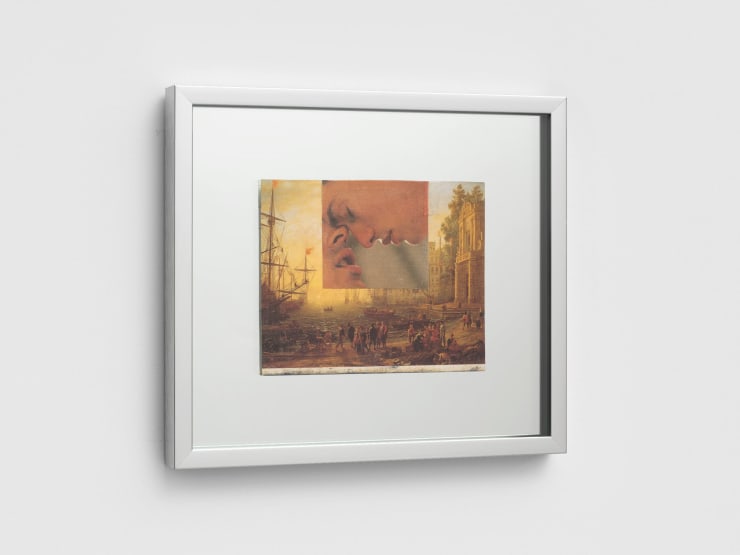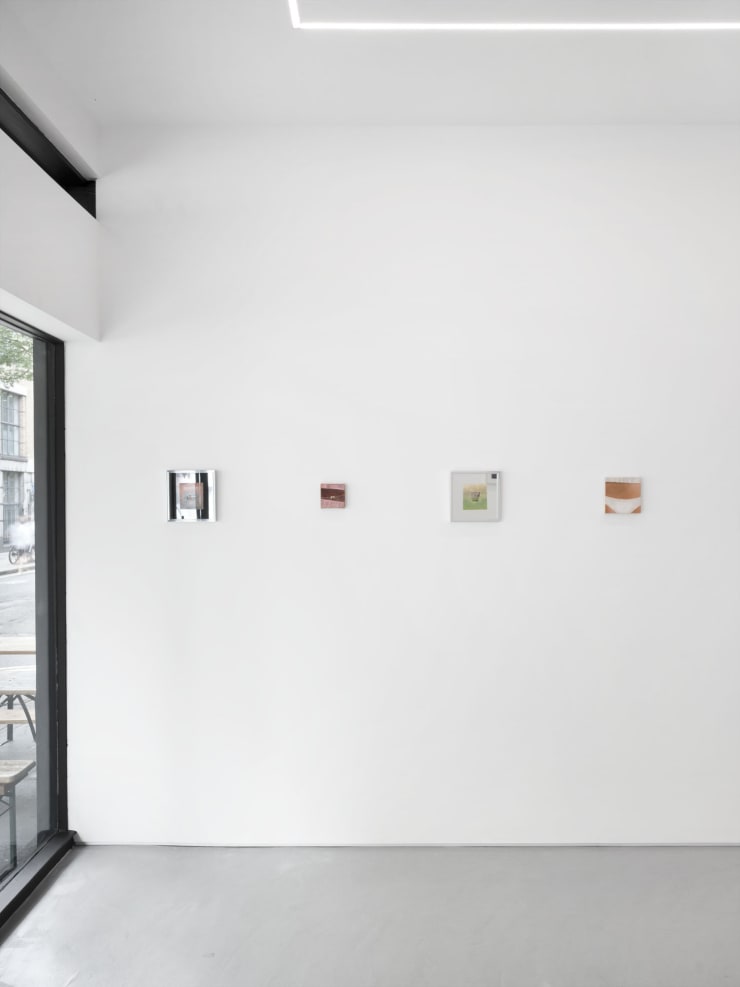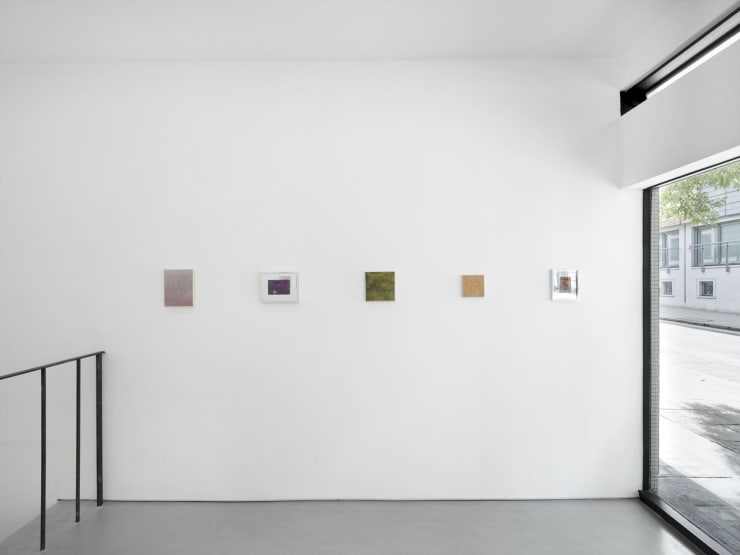Like Lovers Do: Katelyn Eichwald
Eichwald's paintings emerge from the thresholds of girlhood, not as biography or identity, but as atmosphere. They are emotional transcriptions of secrets folded into a diary, snapshots of yearning suspended between innocence and desire. Her works don’t reproduce stereotypes of youth so much as they replay the psychic theatre behind them: the bedroom, the fan magazine, the daydream. She conjures a world where romantic tropes become devotional objects, and private obsessions take on the lace of lingerie as much as the texture of myth.
At the heart of this world is a girl who never speaks directly. She writes letters she’ll never send, pastes images of her idols beside her own reflection, draws herself into scenes that never happened. She’s chipped her nail polish and blurred the VHS tape, but she keeps rewinding. Her longing is vivid, but oddly impersonal, more about the wanting than the having. She wants to want, more than she wants to be wanted. Her rosary is neither sacred nor secular but hangs in a mirror: a symbol of devotion to something unnamed.
She moves between fragment - Leonardo DiCaprio in Titanic, River Phoenix in My Own Private Idaho, Winona Ryder chain-smoking in Reality Bites, Liv Tyler in Stealing Beauty. The references aren’t nostalgic, they’re talismanic. Not about the past, but about projection: how it feels to idolise someone, or want to be someone else, or imagine yourself as a silhouette in someone else’s fantasy. She doesn’t want the boy, she wants the yearning. The fandom is the feeling.In Eichwald’s world, pleasure doesn’t resolve, it hovers. The aesthetic of love becomes an end in itself, where the yearning is more real than any touch. Her figures - half-girls, half-icons - are painted in blush pinks and baby blues, surrounded by drifting curtains and floating talismans. She’s both princess and martyr, ballerina and broken girl, drawn to the poetry of shipwrecks and tragic backstories. This is a Goya painting of a woman fainting, a Redon flower trembling in the dark.
The tone is part romance, part masquerade. A girl in her childhood bedroom, caught between Brontë and The Talented Mr. Ripley, scrolling through obsessions she can’t speak aloud. She is every girl who ever watched from the window, her desires blurry, aestheticised, a little ashamed. But her longing is powerful, its very disconnection becomes a kind of protection. She is soft but not fragile, dramatic but not tragic. She lingers, loops, rewinds.
Featured Press
What to See During London Gallery Weekend 2025 - Frieze, Thomas McCullan
11 Must-See Exhibitions at London Gallery Weekend 2025 - Artsy, Millen Brown-Ewens
London Gallery Weekend: Top Three Must-See Shows - Ocula
Interview with Katelyn Eichwald - A2Z Magazine, Julie Jeong
Like Lovers Do coincided with the literary salon, Rejection is Romantic, for a London Gallery Weekend event. Rejection is Romantic is dedicated to rejections experienced in life, love, work, identity, and more, curated and hosted by writer Emma Firth. The event will have readings from Emma Firth, James Massiah, Scarlett Sabet, Sophie Mackintosh, and Jess Cole.
"I wanted to create a social night – inspired by the literary salons of the 1930s – where writers and friends and fans could gather; share their work, ideas. Crucially, I want to celebrate the thing we rarely get to celebrate: ✰ Rejection✰." — Emma Firth
-
 Katelyn EichwaldLove Ridden, 2025Oil on linen15.2 x 15.2 cm
Katelyn EichwaldLove Ridden, 2025Oil on linen15.2 x 15.2 cm
6 x 6 in -
 Katelyn EichwaldI Wake Up Crying, 2025Oil on linen25.4 x 20.3 cm
Katelyn EichwaldI Wake Up Crying, 2025Oil on linen25.4 x 20.3 cm
10 x 8 in -
 Katelyn EichwaldHalf Moon Eye, 2025Oil on canvas10.2 x 15.2 cm
Katelyn EichwaldHalf Moon Eye, 2025Oil on canvas10.2 x 15.2 cm
4 x 6 in -
 Katelyn EichwaldFeeling #1, 2025Oil, inkjet print, and tape on paper in polished aluminium frame with mirror mount21.5 x 20.5 cm
Katelyn EichwaldFeeling #1, 2025Oil, inkjet print, and tape on paper in polished aluminium frame with mirror mount21.5 x 20.5 cm
8 1/2 x 8 1/8 in -
 Katelyn EichwaldParadise, 2025Oil on linen20.3 x 20.3 cm
Katelyn EichwaldParadise, 2025Oil on linen20.3 x 20.3 cm
8 x 8 in -
 Katelyn EichwaldIt's Hard Enough Even Trying To Be Civil To Myself, 2025Oil on linen20.3 x 20.3 cm
Katelyn EichwaldIt's Hard Enough Even Trying To Be Civil To Myself, 2025Oil on linen20.3 x 20.3 cm
8 x 8 in -
 Katelyn EichwaldSpring 1998, 2025Oil on linen20.3 x 15.2 cm
Katelyn EichwaldSpring 1998, 2025Oil on linen20.3 x 15.2 cm
8 x 6 in -
 Katelyn EichwaldThey Say You Were Something In Those Formative Years, 2025Oil on burlap10.2 x 10.2 cm
Katelyn EichwaldThey Say You Were Something In Those Formative Years, 2025Oil on burlap10.2 x 10.2 cm
4 x 4 in -
 Katelyn EichwaldFeeling #6, 2025Oil, inkjet print, and tape on postcard in polished aluminium frame with mirror mount22 x 25 cm
Katelyn EichwaldFeeling #6, 2025Oil, inkjet print, and tape on postcard in polished aluminium frame with mirror mount22 x 25 cm
8 5/8 x 9 7/8 in




















